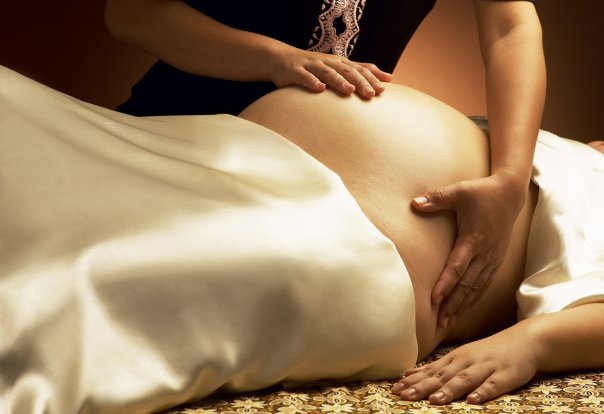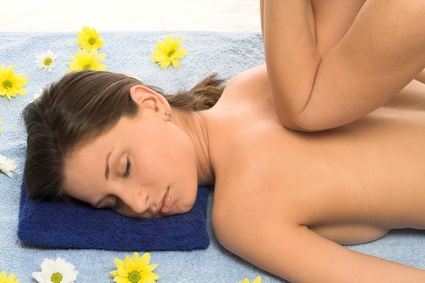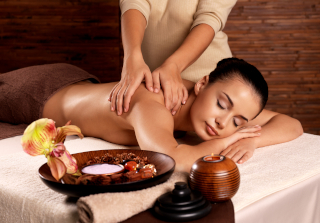Scoliosis
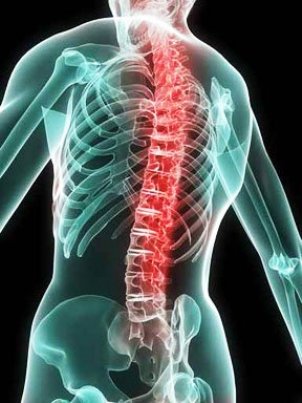
Progressive degenerative disease
One of the most common complaints from people coming for massage in Neva Center of Manual Therapy and Massage are back pain / discomfort and headaches. Many things may cause this, but one of the most widespread causes is scoliosis. We get a lot of questions on this condition, and would like to tell you more about it in “plain English”.
Scoliosis is a progressive disease of musculoskeletal system accompanied by deviation of backbone from the vertical axis and development of torsion (vertebrae turn around its axis),
 Normally, our backbone has 4 physiological bends in the frontal plane – 2 bends forward (neck and lumbar lordoses) and 2 bends back (chest and sacral kyphoses). Formation of these bends happens gradually in the process of child growth and development.
Normally, our backbone has 4 physiological bends in the frontal plane – 2 bends forward (neck and lumbar lordoses) and 2 bends back (chest and sacral kyphoses). Formation of these bends happens gradually in the process of child growth and development.
When a child is born she has no bends of a backbone. , cervical lordosis is developed when a baby begins keeping the head up. When child begins to sit, chest kyphosis is formed.
Then, as he learns crawling, lumbar lordosis is formed.
And finally, sacral kyphosis appears as the child gets on her feet without help and begins walking.
These physiological curvatures help our body to keep a certain center of gravity in space. Having them too big is bad for one’s body.
Scoliosis is deviation of the spinal column from the vertical axis in any direction. The more the deviation, the more the severity of scoliosis. Right scoliosis is characterized by the convex is protruding in the right direction. Likewise, we talk about left scoliosis when the convex is protruding in the right direction.
If a vertebra or parts of the backbone is turned around its axis (a very alarming sign!) we can talk about scoliotic disease which frequently leads to rib deformity (rib hump).
.The backbone deviations sometimes are not visible to the naked eye, but present tremendous health troubles. People suffering from scoliosis have more frequent
headaches or incidents of back pain and fatigue, arm and leg pain even with little or no physical stress. Insomnia, poor sleep and nightmares are common. All these problems become more noticeable with age and affect one’s quality of life.
A legitimate question is: what causes scoliosis? Why some people have it, yet for others everything is great with their posture and backbone?
As always, causes are numerous.
1. Hereditary predisposition. This does not mean that parent’s scoliosis is necessarily passed to kids. Of course, they are more likely to have it than children whose parents never had scoliosis. If history of scoliosis is present in a family, parents need to be more careful to watch their kid’s health.
2. Childhood falls quite often result in scoliosis. It may look like nothing to be concerned about when a kid gets hit in the back. However, children’s vertebral ossification does not occur immediately. Initially, vertebrae have only zones of ossification. During growth, the vertebrae gradually get ossified, and then growth stops. Now, after her back is hit, contusion of inter-vertebral disc occurs. Inter-vertebral disc ceases to grow, while the other inter-vertebral discs continue to grow (it is clearly visible on X-ray images). To ensure the center of gravity remains in the same position, scoliotic arcs appear.
3 . Weak connective tissue. Recently, this issue has received increasing attention. The thing is, we are all made of grid-like connective tissue (connective tissue carcass) of collagen and elastin fibers holding various cells of special structure and special purpose. Recently it has been established that apparently collagen as well as proteins can have 4 types of structures: chain (primary), spiral (secondary), more complex s, twisted spiral (tertiary), and glomerulus (quaternary). The more complex the structure of collagen, the stronger connective tissue is ... the stronger (in any respect) a person is. Mg is responsible for the structure of collagen.
4. Theory of insufficient bone tissue massage.
According o the theory, motion causes special massage of bone tissue. This improves blood supply to the bone. Lack of motion causes poor blood supply to bone tissue that in turn leads to scoliosis.
5. Rapid childhood growth. Often leads to scoliosis. Therefore, parents of children who grow up quickly need to be more careful.
6. Dysraphism .
A child with anatomical anomalies (such as kidney doubling, extra ribs, etc. is very likely to have scoliosis.
7. Endocrine and hormonal abnormalities.
Frequently result in osteoporosis with accompanying scoliosis. Childhood rickets (caused by lack of vitamin D) leads to disruption of Ca metabolism and development of scoliosis. But beware ... excessive intake of fish oil - a source of vitamin D, may cause cirrhosis, since vitamin D is accumulated in the liver. This is why it is necessary to get sufficient amount of ultraviolet rays by spending sufficient time outdoors, but do not under direct sunlight.
8. Prolonged forced body fixation (e.g. after fractures of clavicle, ribs, shoulders, legs) may lead to development of scoliosis.
9. Idiopathic scoliosis (when the cause is unknown).
Nevertheless, statistically scoliosis is encountered in 4% of general population.
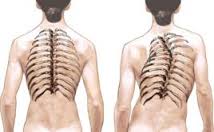 Scoliosis
makes the body grow sidewise (not vertically). On top of that, the body grows asymmetric: one side of the rib cage may be wider and accordingly heavier than another side. This in turn promotes spine deformity, changing blood supply and causing formation of wedge-like vertebrae. Thus, inter-vertebra pressure gets out of balance resulting in multiple
disc protrusions
and
disc hernias
, local muscle strain (formation of so called muscle roll (?)) and vertebra torsion (vertebra spin relative to the vertical axis. Disc protrusions and hernias deteriorate blood supply to various body parts, cause pain in muscles and nerve endings (from nerve compression).
Scoliosis
makes the body grow sidewise (not vertically). On top of that, the body grows asymmetric: one side of the rib cage may be wider and accordingly heavier than another side. This in turn promotes spine deformity, changing blood supply and causing formation of wedge-like vertebrae. Thus, inter-vertebra pressure gets out of balance resulting in multiple
disc protrusions
and
disc hernias
, local muscle strain (formation of so called muscle roll (?)) and vertebra torsion (vertebra spin relative to the vertical axis. Disc protrusions and hernias deteriorate blood supply to various body parts, cause pain in muscles and nerve endings (from nerve compression).
Scoliosis may be treated conservatively or surgically. The main goal of the early treatment is backbone stabilization. To achieve this, therapeutic massage, manual therapy, physical therapy, exercise, and medicament therapy (chondro-protectors, vitamins) are used.
Scoliosis should be treated carefully. This issue was given a lot of attention in the countries of the former USSR. Has gained vast experience in treating such patients, because
treatment of these patients, health care workers involved.
To avoid surgery, scoliosis must be treated by multiple approaches. Treatment should not be agressive. First, use therapeutic exercise and massage. Massage is going to take care of muscle spasms, improve blood supply to tissues and cell metabolism. In some cases this is enough, since excessive impact may to the contrary deteriorate scoliosis and promote its progression. Manual therapy must be applied to the area of pathology (where initial changes began; an expert in neck, chest, lower back, cervical centers of gravity can easily identify this area).
If a manual therapist or chiropractor is not qualified to do this, he or she should not attempt to treat such patients. It is very important to stabilize the backbone, not to make it off-balance. Therapeutic exercise helps improve one’s posture straightening curvatures to the opposite direction. But therapeutic exercise must not be abused, otherwise backbone stability is negatively affected, and scoliosis progression may occur. Phiyical therapy (ultrasound, phono-phoresis, electrical currents, magnet therapy target relaxation of contracted muscles an improvement of their blood supply.
At the age of about 20 years old, humans stop their growth. If by this age you were unable to stabilize the backbone and stop scoliosis progression, surgery is recommended. But, as you know the best surgery is the surgery avoided. Thus, follow our recommendations.
Should you experience heaviness in the back, pain while at rest or at work, pain and numbness in arms/hands, legs/feet, back, neck, headaches or have questions, come to Neva Center of manual therapy and massage, and our qualified staff will be happy to help you.

